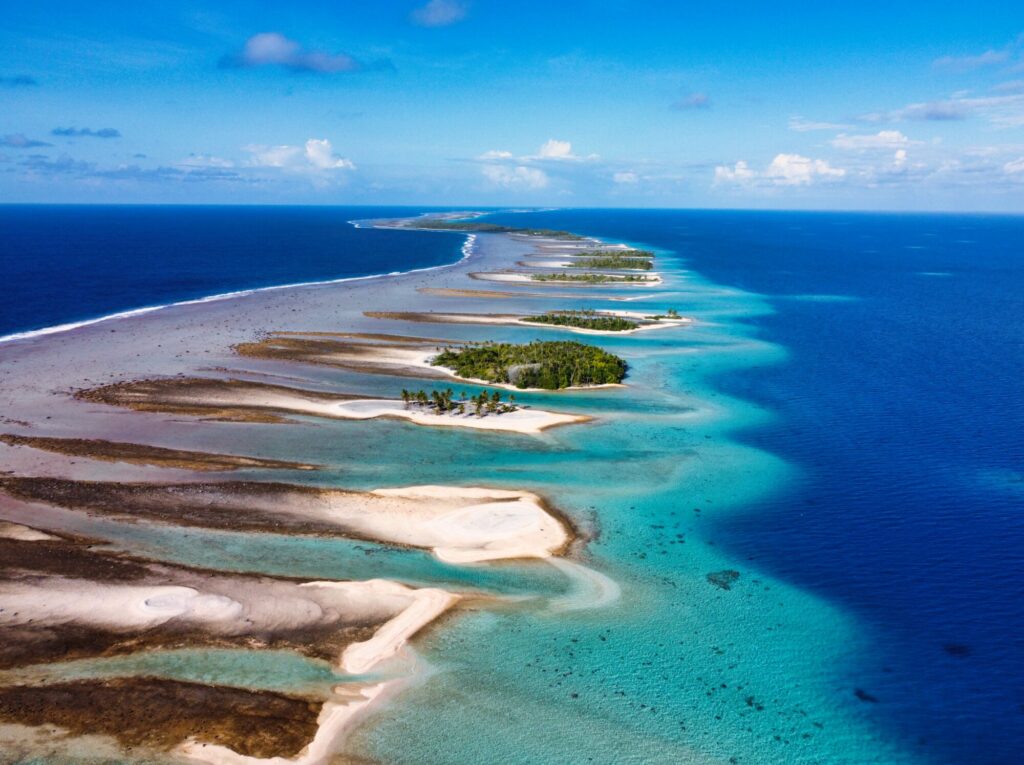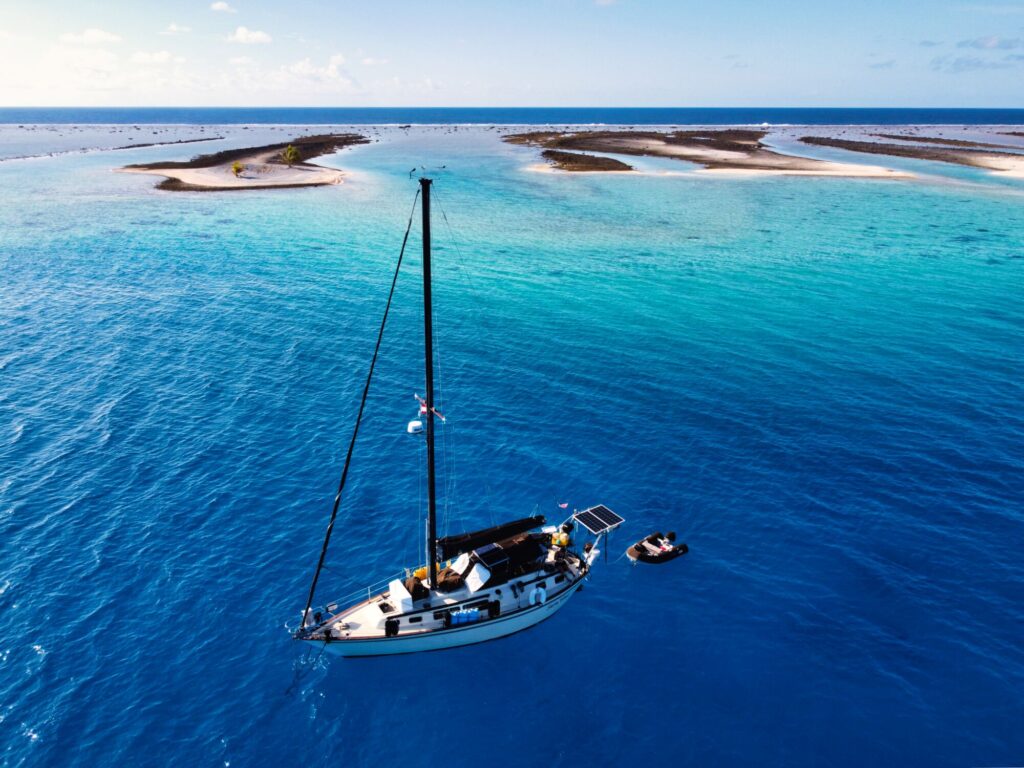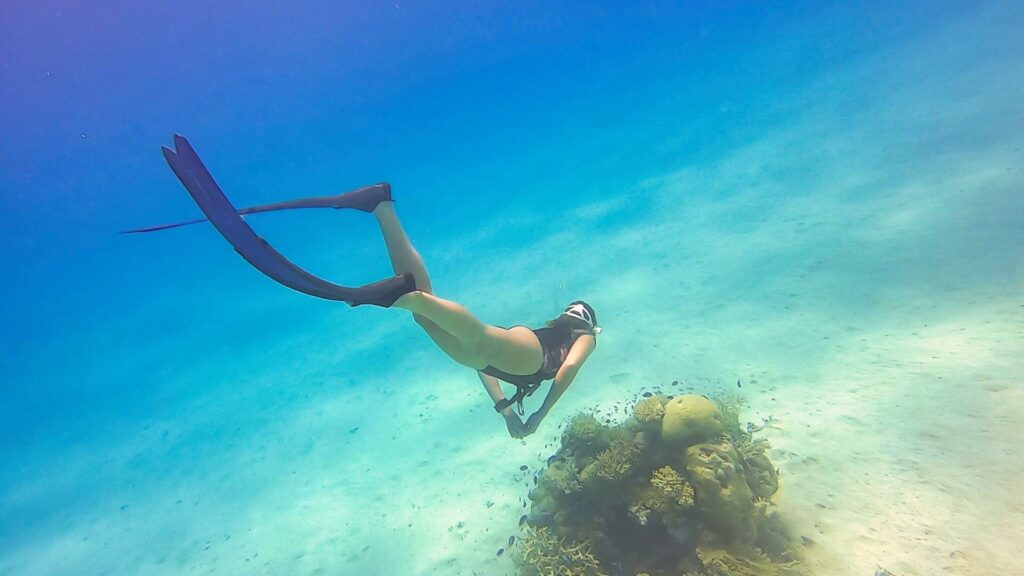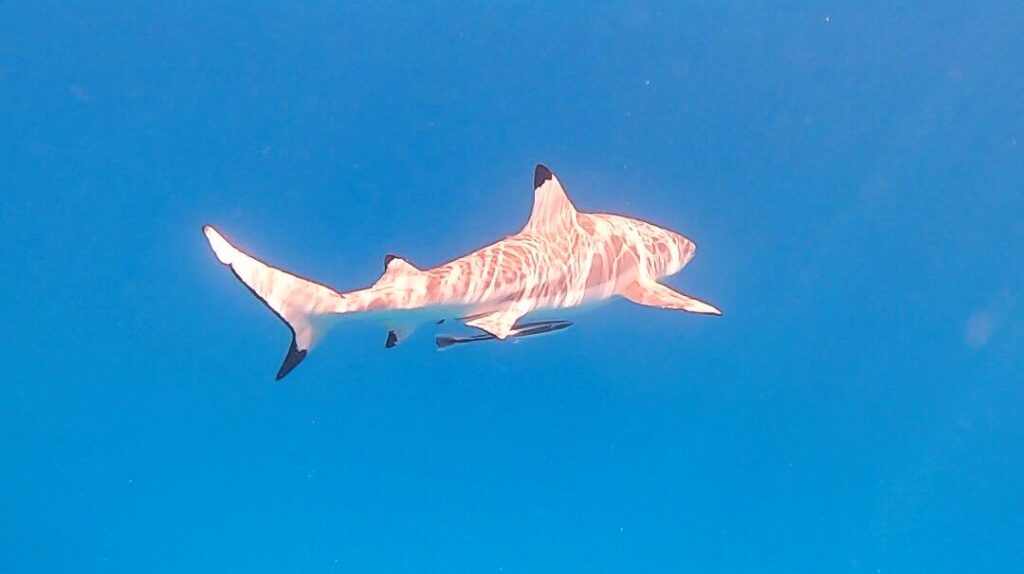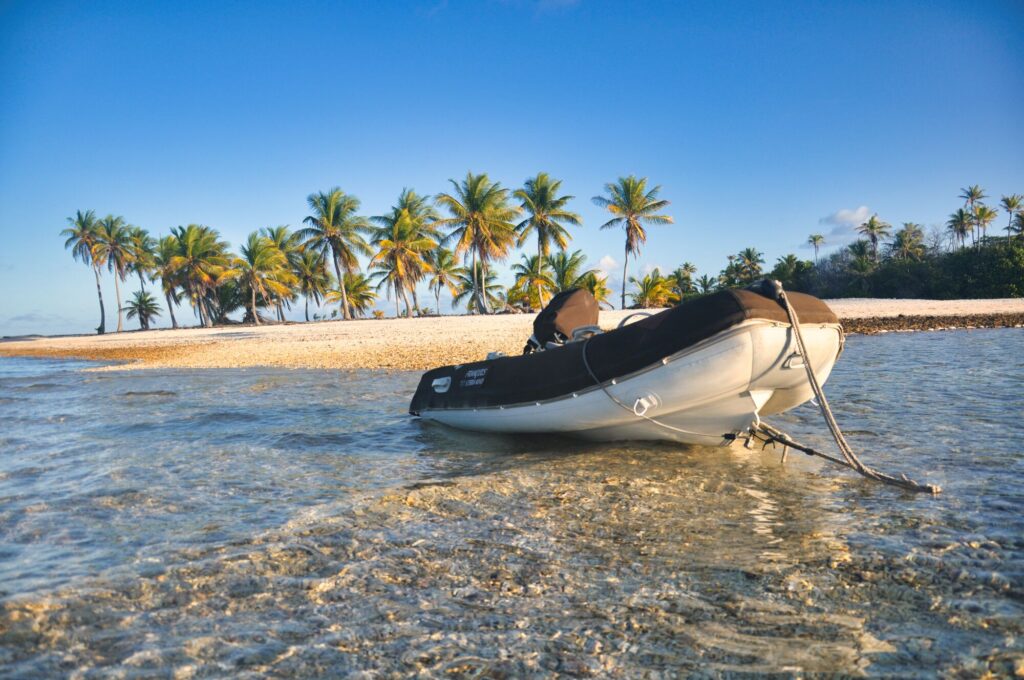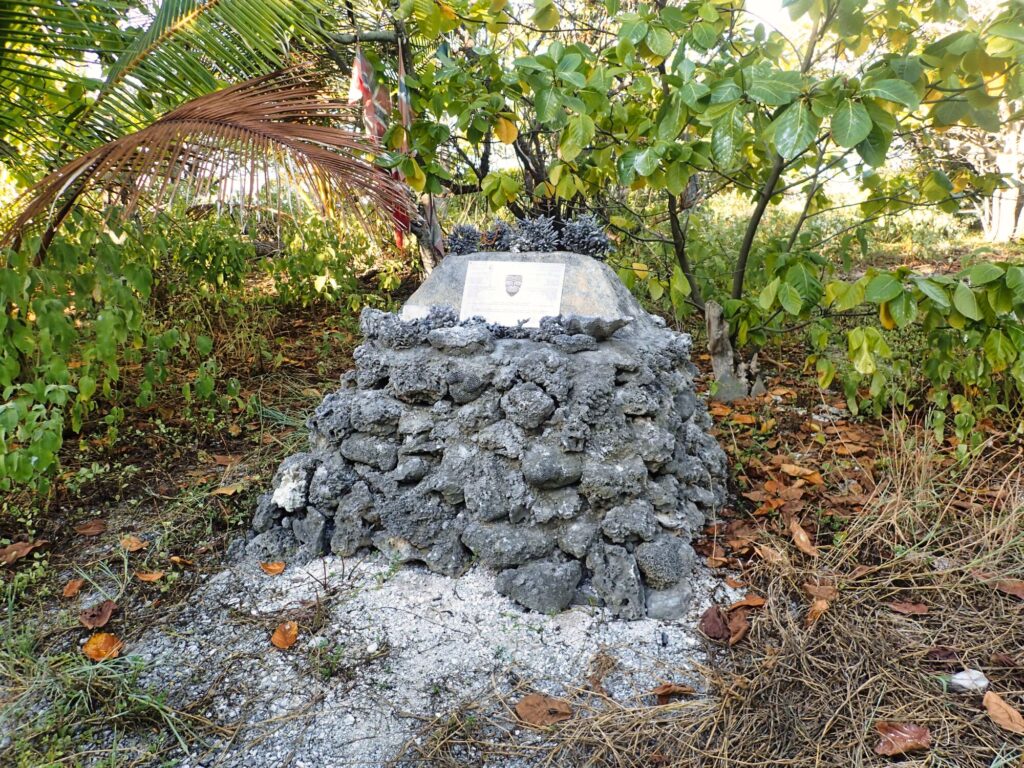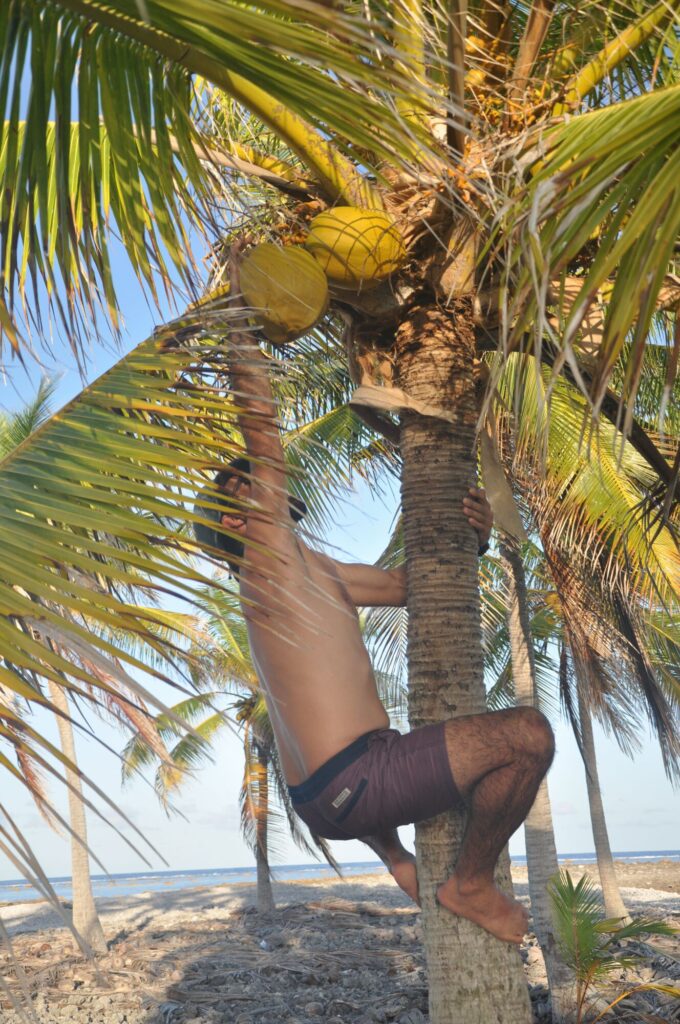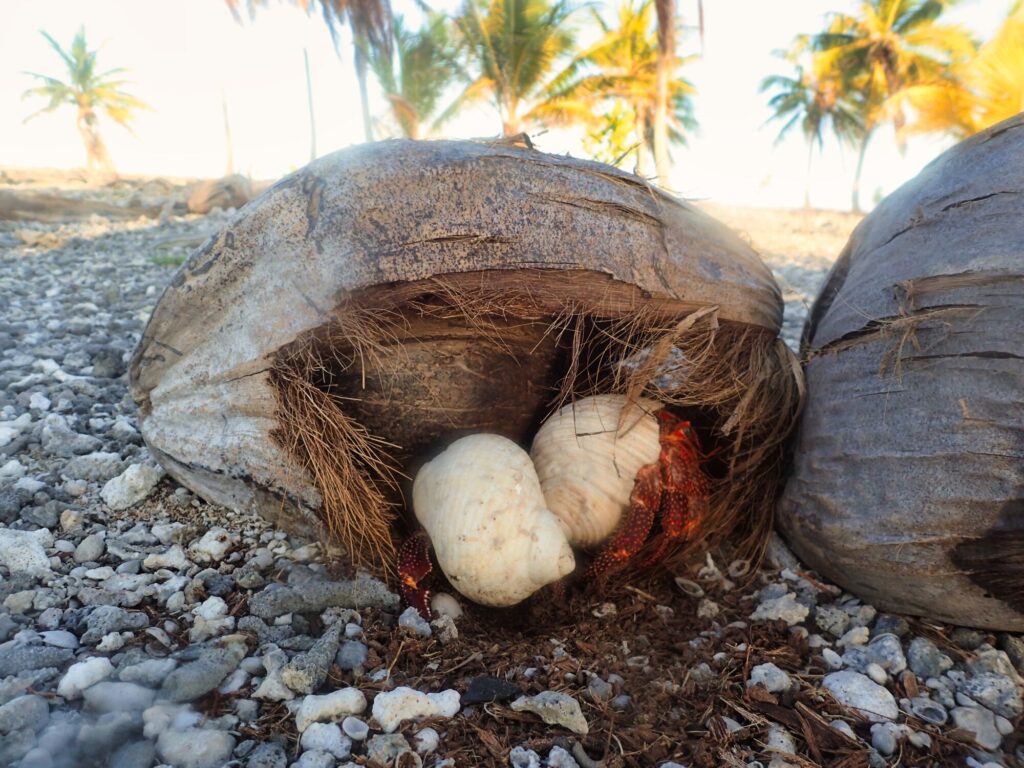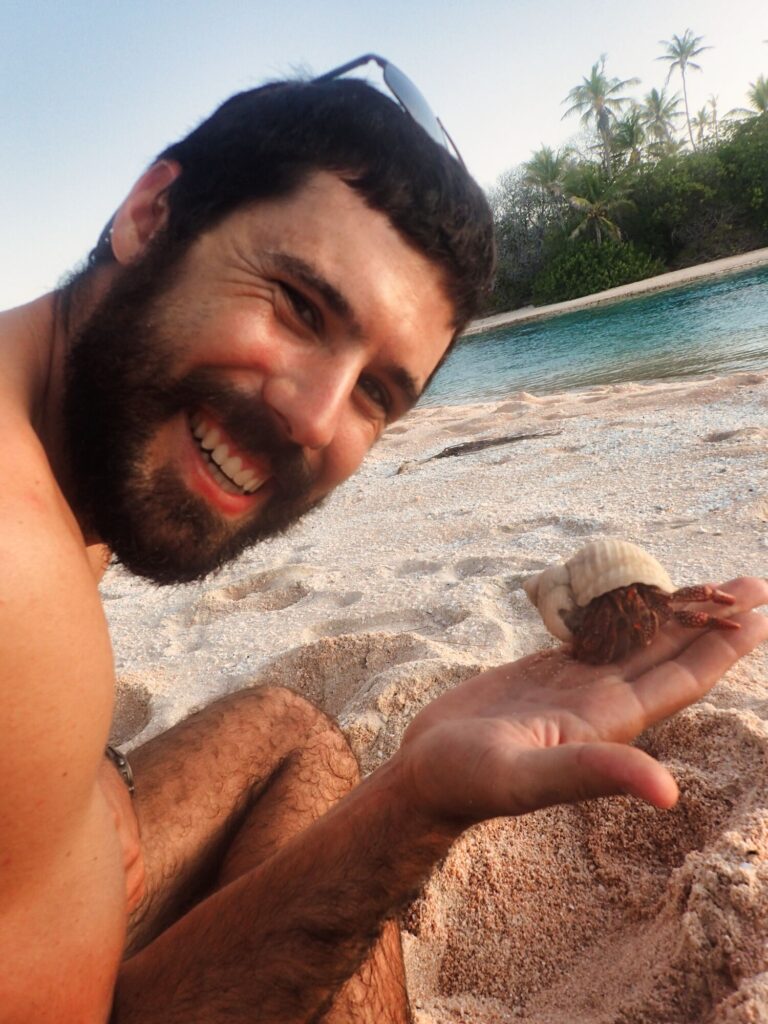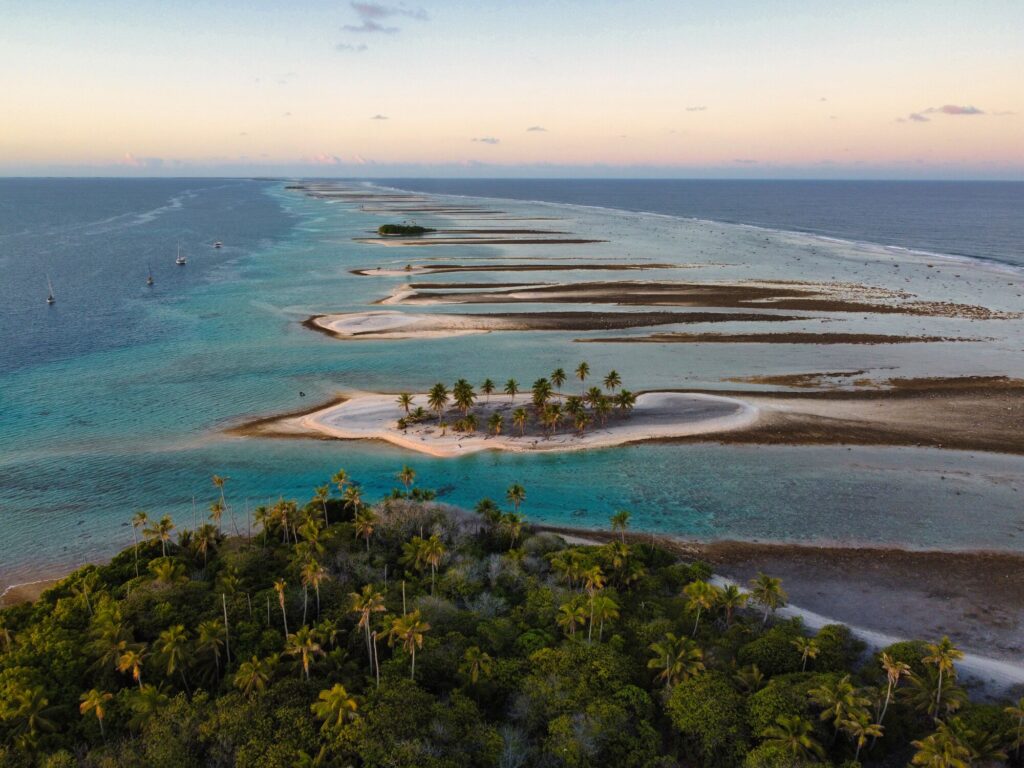After our four-day passage from the Marquesas to the Tuamotus, we arrived at the Raroia Atoll just after sunrise and dropped the anchor. We heard from other cruisers that it was vital to learn the art of “floating” the anchor chain. If we wanted to make it through the Tuamotus safely, without our anchor rode wrapped around any coral outcrops, we needed a series of floats to lift the chain and suspend it above the sea floor. To experiment with this concept, we tried tying one of our boat fenders to the chain to see how much buoyancy it could provide given the weight of the chain, but it turned out to be absolutely useless as it almost completely collapsed as it sank under the pressure of 40 feet of water. It looked as though we would need to find some better floats that wouldn’t collapse as they sink below the surface. We later found out that the hard floats that are used in pearl oyster farming are most commonly used for this advanced anchoring technique, since they don’t collapse when submerged.
Despite having been up since the start of my watch at 3 am, seeing the crystal-clear water and palm tree lined beaches was more stimulating than the strongest cup of coffee. I couldn’t wait to hop in the water and start exploring our new neighborhood from above and below the surface. But it seemed something else was already exploring us as I saw a few large tan shapes beginning to circle the boat, blacktip reef sharks! The Tuamotus are one of the top destinations in the world to dive and swim with sharks and it was already living up to its reputation.
After months of having some of my snorkeling gear stowed away, I was finally able to dust off and assemble my new freediving long fins. But before we could snorkel, I needed to recover the fender from the anchor chain to avoid damaging it at the depths. Plus, it was a great time to test out the new fins. As I dove down, I was surprised at how much power my foot strokes had, and made it down easily. I asked Eitan how deep the anchor was set and was surprised to hear 45 feet, this was the deepest I had ever dove! My new fins were off to a great start!
We spent some time just snorkeling around the boat, exploring the little coral outcrops strewn throughout the crystal clear water. It was amazing to see the number of fish and creatures living around a single coral head. The marine life here looked pristine and untouched and I loved seeing all the new types of fish I didn’t recognize. My favorites were the small blue or black and white fish that live in the coral, cautiously hovering around the coral head and retreating from any potential threat. I also enjoyed a few familiar faces including the small needle-nosed houndfish and larger porcupine and boxfish fish that I recognized from diving in Mexico. As we snorkeled, blacktip reef sharks circled curiously but never got too close. At first, their presence creeped me out but after learning that the only attacks are on spear fishermen carrying dead fish, I felt pretty safe and enjoyed our interactions.
Later on, Eitan and I decided to do some exploring on land and parked the dinghy at one of the small islands, which are called “motus”. After watching the documentary about the Kontiki expedition to Raroia, we set out looking for the monument on the motu they landed on. In 1947, a handful of Scandinavians set out to prove it was possible for Polynesia to have been originally colonized by South Americans. They built a raft by hand and sailed it from Peru, crashing into the reef at Raroia 101 days later. We found the monument a few motus over and it was amazing to think of their Pacific crossing and what an adventure it must have been.
Afterward, we laid out a towel and enjoyed an afternoon of sundowners on the beach in our new found paradise. We were quickly joined by a number of hermit crabs in various sizes, ranging from the size of a jellybean to that of a baseball. They came to investigate anything unattended and I even found one munching on the leather camera strap. I found it funny that Eitan became completely transformed around these small creatures. Normally, he rarely smiles in pictures and doesn’t really like to be photographed, but he was smiling ear to ear as I snapped a few pictures of him posing with the hermit crabs. During our earlier land exploration, I found a really beautiful shell that I was hoping to take as a souvenir, but by the time we were packing up our things to leave, a hermit crab had already called my shell it’s new home and I had to leave it behind.
We spent the next couple days catching up on rest, snorkeling, and exploring around the anchorage. It seemed that we had finally found the French Polynesia paradise we had been looking for!
